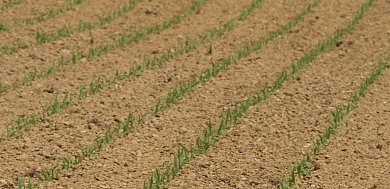WASHINGTON — The odds favor above-average temperatures this spring across much of the continental United States, including drought-stricken areas of Texas, the Southwest and the Great Plains.
That’s the word from the three-month U.S. Spring Outlook the National Oceanic and Atmospheric Administration, or NOAA, issued March 21.
Spring promises little drought relief for most of these areas, as well as Florida, with below-average spring precipitation favored there. Meanwhile, river flooding is likely to be worse than last year across the country, with the most significant flood potential in North Dakota.
Weather extremes
“This outlook reminds us of the climate diversity and weather extremes we experience in North America, where one state prepares for flooding while neighboring states are parched, with no drought relief in sight,” said Laura Furgione, deputy director of NOAA’s National Weather Service.
“We produce this outlook to help communities prepare for what’s likely to come in the next few months and minimize weather’s impacts on lives and livelihoods.”
The U.S. Spring Outlook identifies the likelihood of spring flood risk and expectations for temperature, precipitation and drought. The outlook is based on a number of factors, including current conditions of snowpack, drought, soil moisture, streamflow, precipitation, Pacific Ocean temperatures and consensus among climate forecast models.
Spring flood risk
After a year of reprieve, the Red River of the North between eastern North Dakota and northwest Minnesota, and the Souris River in North Dakota have the potential for moderate and major flooding.
Devils and Stump Lakes in northeast North Dakota have a 50 percent chance of rising approximately two feet, which would flood 20,000 acres of farmland and roadways.
The melting of late-season snow may cause minor to moderate flooding in the upper Mississippi River basin, including southern Wisconsin, northern Illinois and northern Missouri.
The tributaries in the plains of the upper Missouri River basin, specifically along the Milk River in eastern Montana, the Big Sioux River in South Dakota and the Little Sioux River in Iowa may also see minor to moderate flooding. With significant frozen groundcover in these areas, spring flood risk is highly dependent on rainfall and the speed of the snowmelt.
Areas along the middle Mississippi, lower Missouri and Ohio River basins have already experienced minor flooding this year and the threat of minor flooding will continue through the spring. These basins include portions of Kansas, Missouri, Illinois, eastern Iowa, Indiana, Ohio, Kentucky and Tennessee.
Temperature and precipitation
Above-normal temperatures this spring are most likely across most of the continental U.S. and northern Alaska. Below-normal temperatures are favored for the Pacific Northwest and extreme northern Great Plains.
For precipitation, odds favor wetter-than-normal conditions in the Great Lakes and Ohio Valley regions.
Drier-than-normal conditions are most likely in much of the West, the Rockies, parts of the Southwest, much of Texas, along the Gulf Coast and Florida. Hawaii has an enhanced chance of being cooler and drier than normal.
Drought outlook
Fifty-one percent of the continental U.S. — primarily in the central and western regions — is in moderate to exceptional drought. Drought conditions are expected to persist, with new drought development, in California, the Southwest, the southern Rockies, Texas, and Florida.
The outlook favors some improvement in the Midwest, the northern and central Great Plains, Georgia, the Carolinas, and northern Alaska.










